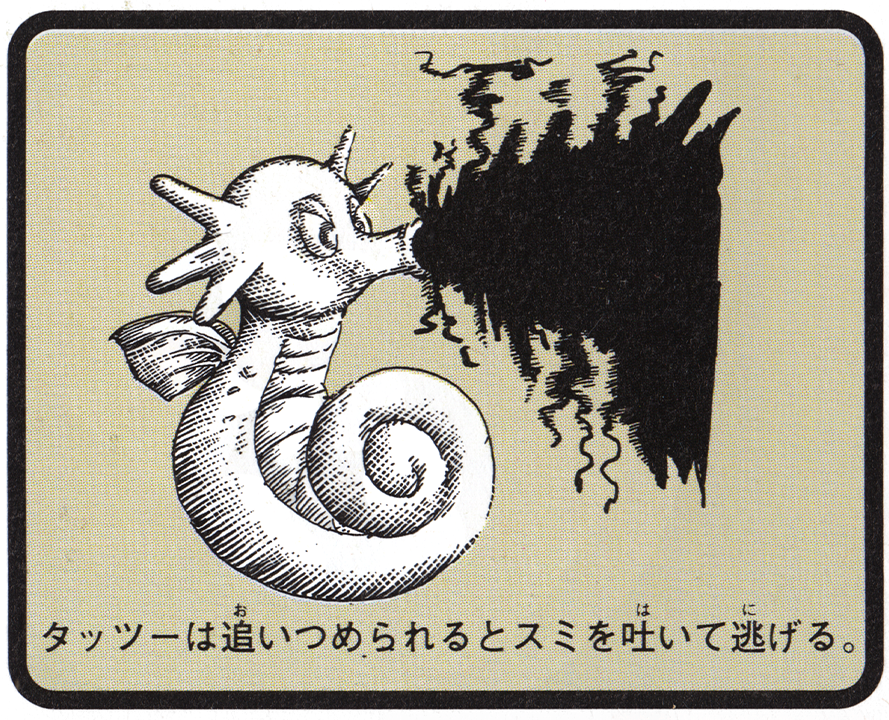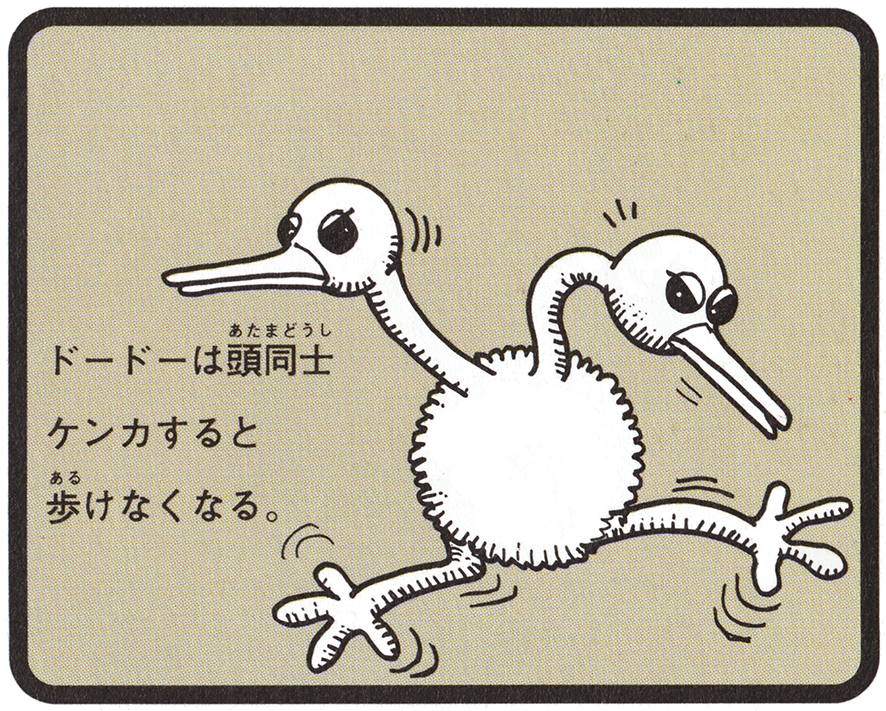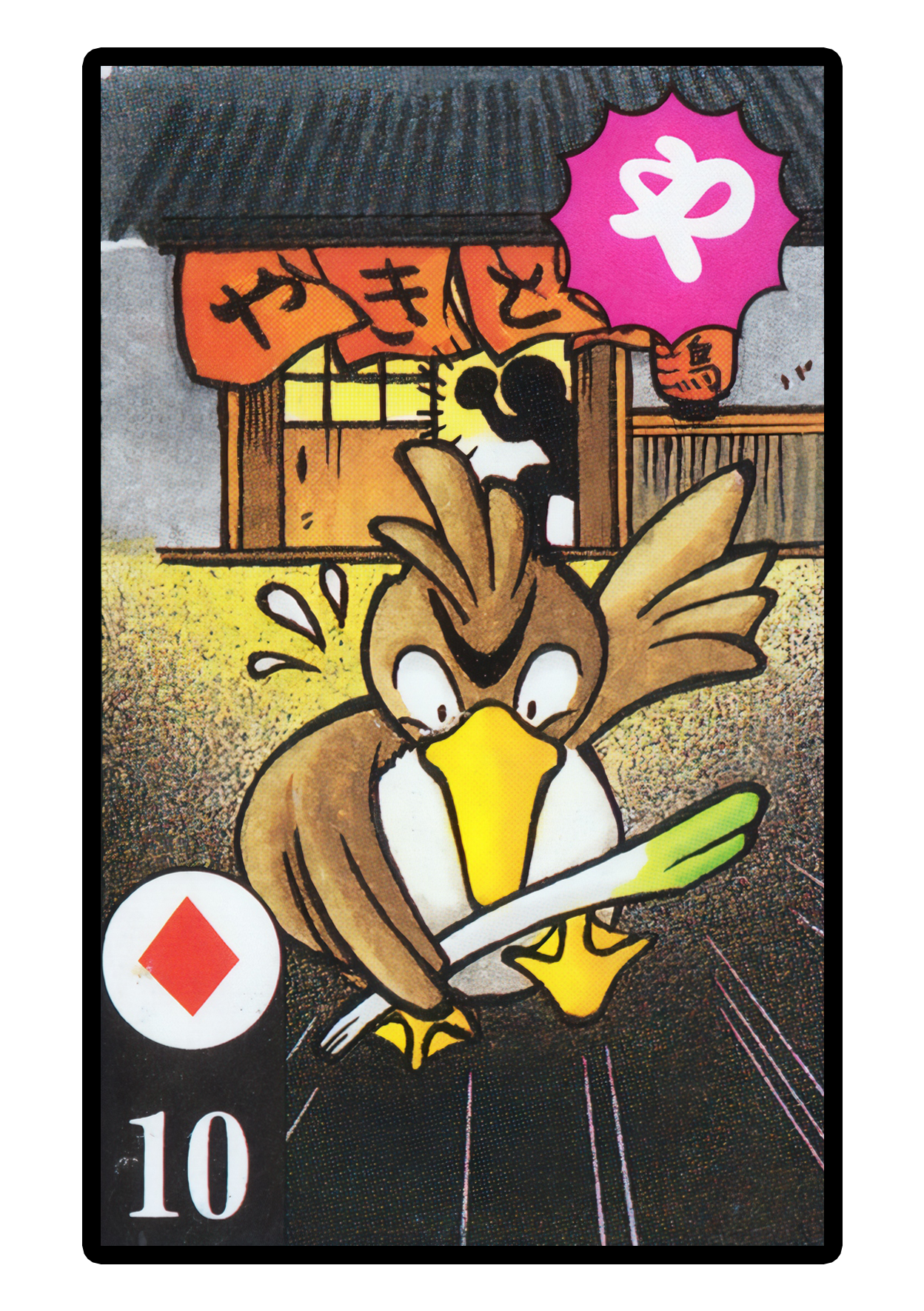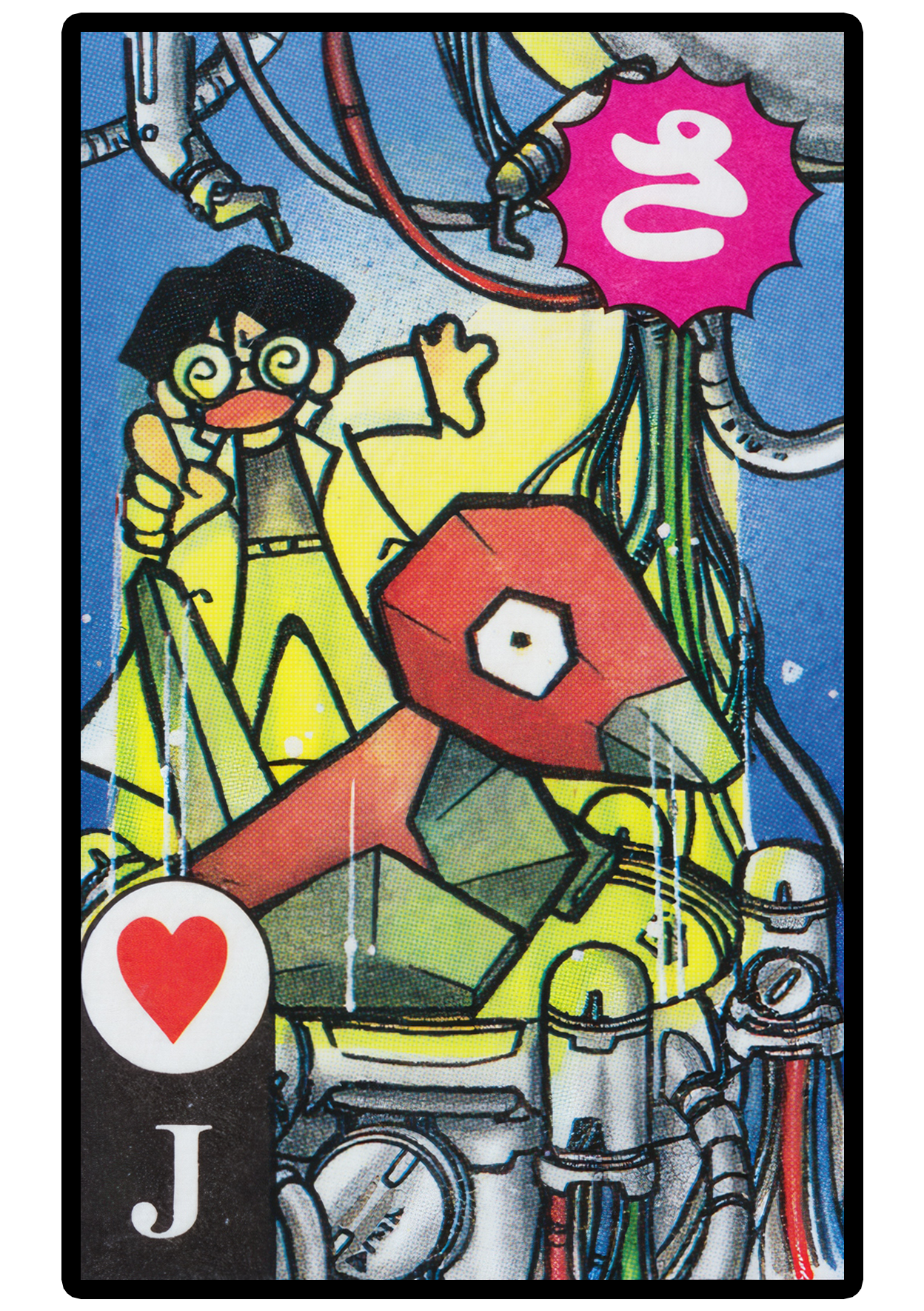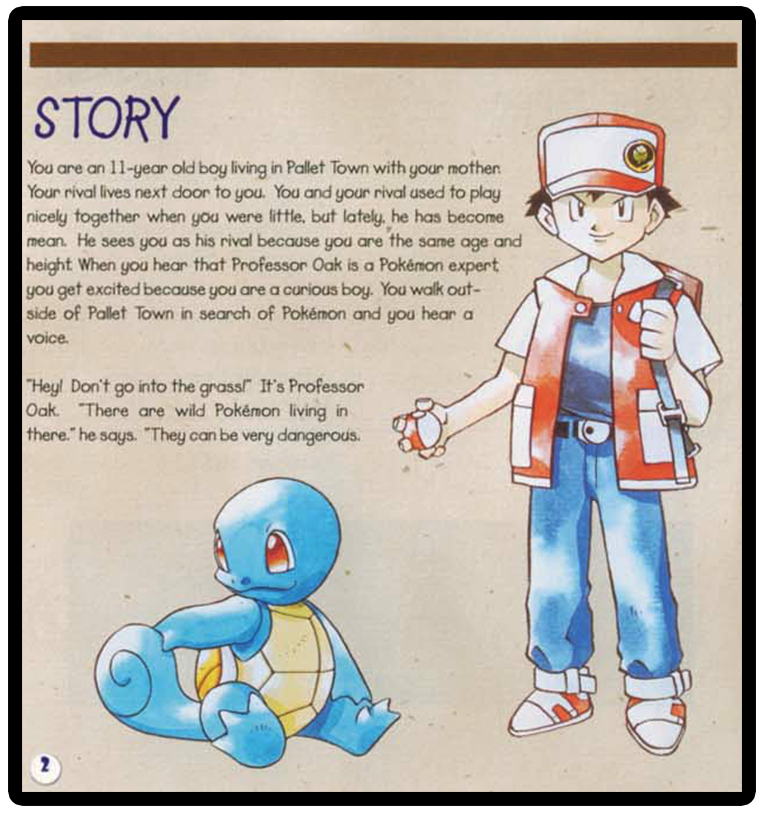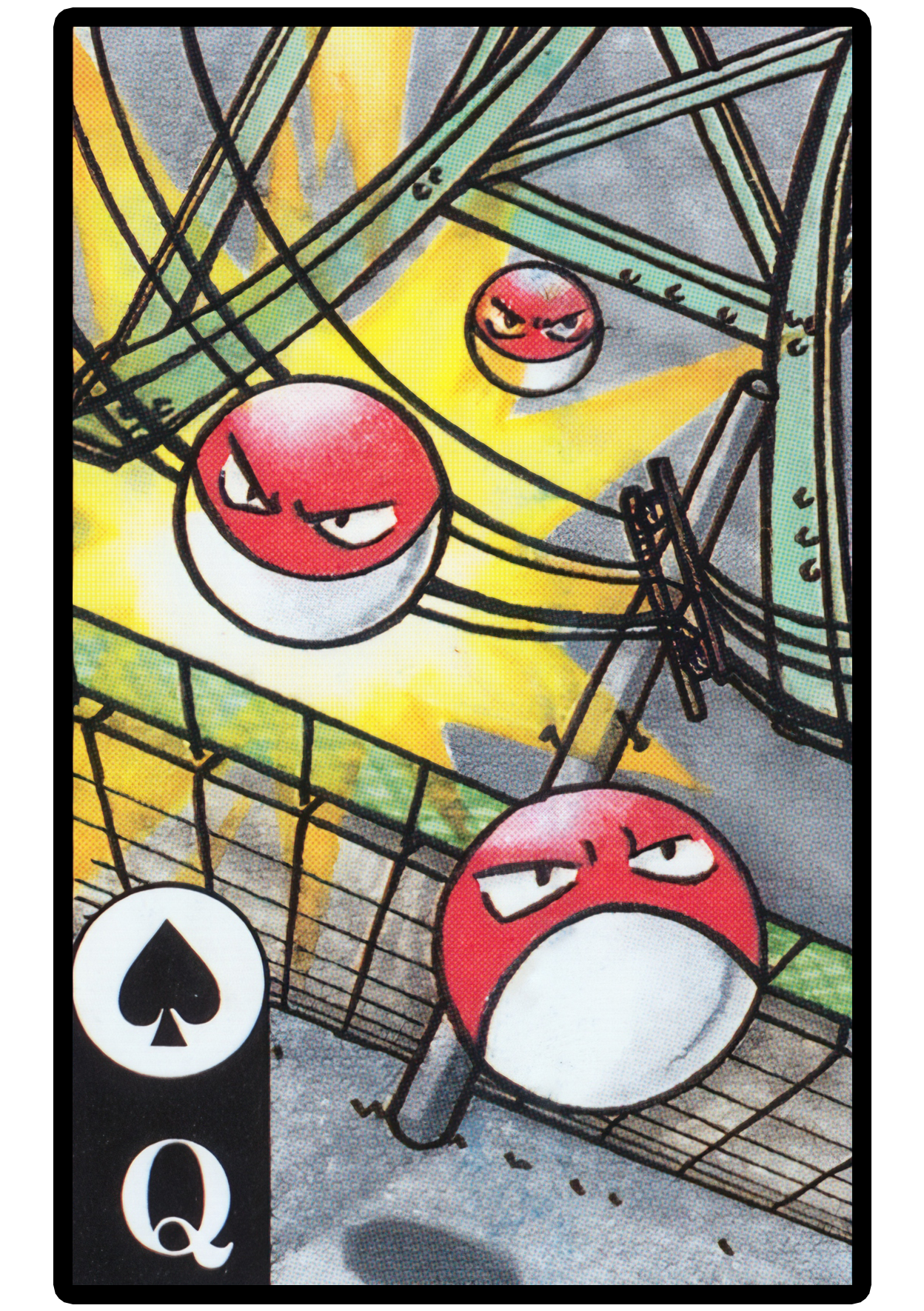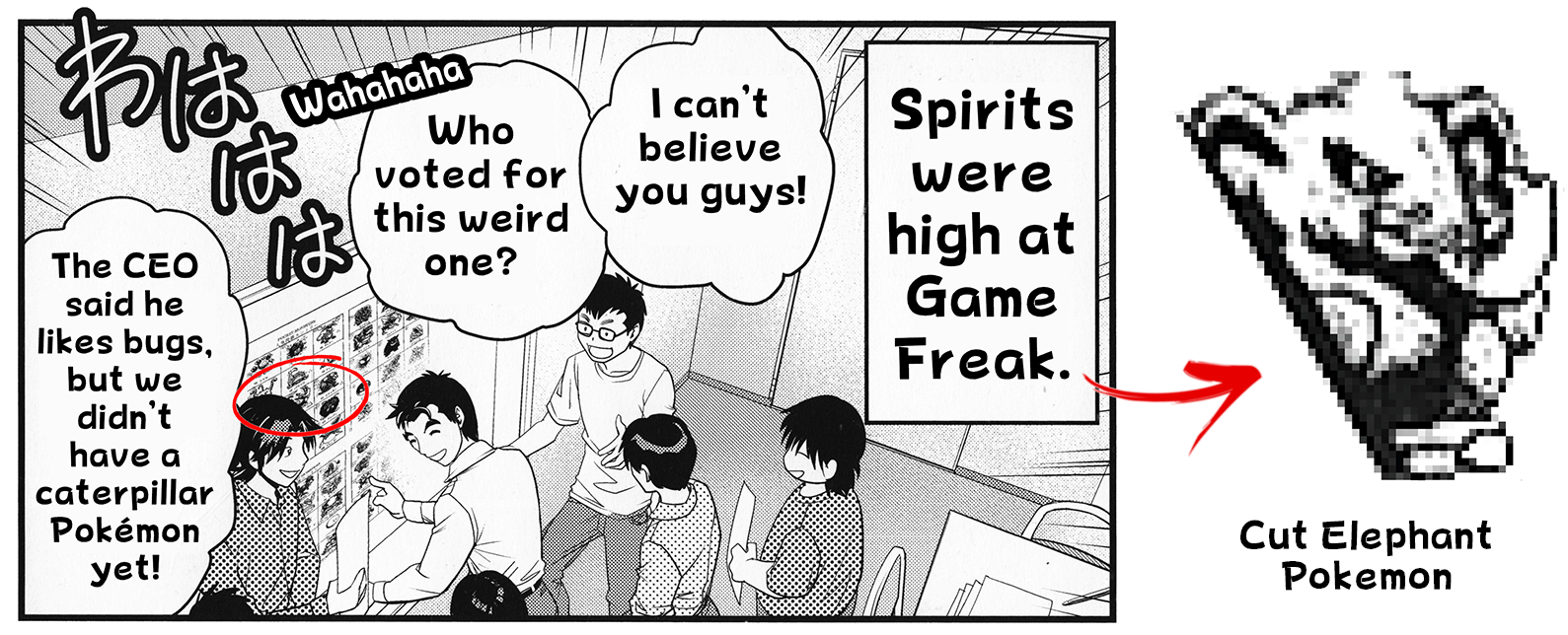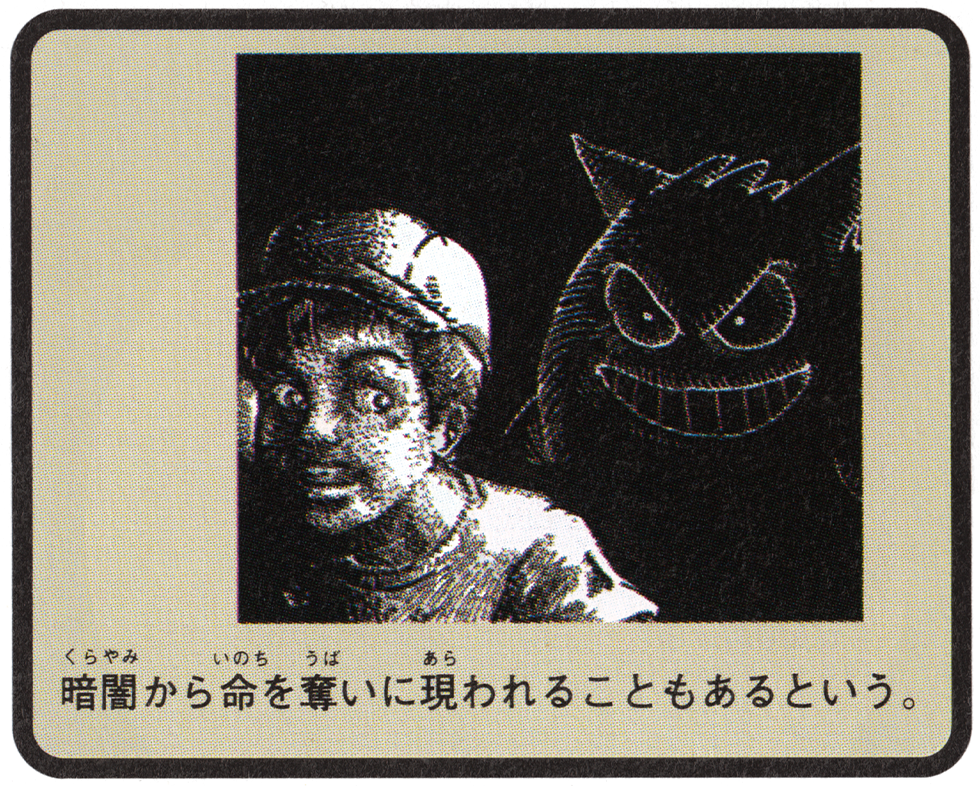
Translation: 1996 Pokédex Book (Part 6)
All 150 Pokédex entries and the introduction
Written by Dr Lava, June 17 2021
This is part 6 of 7 of this translation series. If you’d like to return to a previous part, click one of the links below. Or if you’d rather absorb this 47 page translation in video form rather than reading it through text, click here.
Skip to: Part 1 | 2 | 3 | 4 | 5 | 6 | 7 | Journal | Maps | Itoh Art | Interview | More

“#103 Horsea: They keep balance using their spirally coiled tail. When they sense danger, they may spit black ink. Every spring, the females each lay several thousand eggs on seaweed, but most end up as Goldeen bait. Rare among Pokémon, the males raise the young.”
Dr Lava notes: Here the book provides some artwork by Benimaru Itoh, showing Horsea spitting black ink as it flees an attack.

“#104 Seadra: Horsea’s evolution. Their nature turns vicious from evolving. Carelessly trying to touch them can result in punctures from the spikes growing all over their body. The intense pain can cause fainting.”

“#105 Magikarp: Virtually hopeless in terms of power and speed. If anything were to happen, they immediately use Splash and flop about. They are the world’s weakest and most pathetic Pokémon. However, the most recent studies made an incredible discovery – dragon cells were found in Magikarp’s body. Anticipation runs high for deeper studies.”
Pokemon of the Skies
“Because flying Pokémon must spot their food from up high, their eyesight is acutely developed. Many are good, doting parents. They fly to forests, grasslands, and the seas to capture bugs and fish that they deliver to their beloved chicks awaiting their return in nests on trees.”

“#106 Pidgey: They do not like to fight. If surrounded, they scatter sand to blind their foes and make their getaway. They hide among trees and tall grass when feeding on small bugs and the like. While they feast on Caterpie and Weedle, they oddly ignore Venonat.”

“#107 Pidgeotto: Pidgey’s evolution. They dive from an altitude of 800 meters to capture prey. The claws on their feet are powerfully developed. They have no trouble carrying an Exeggcute – their prey – weighing 25 kilograms to their nest 100 kilometers away.”

“108 Pidgeot: They fly around at Mach-2 speed at 1,200 meters altitude. If they encounter a foe while on the ground, they spread their gorgeous wings for intimidation. Their search for food leads them to even the seas where they make easy prey of meaninglessly splashing Magikarp. It goes without saying that they are the evolution of Pidgeotto.”
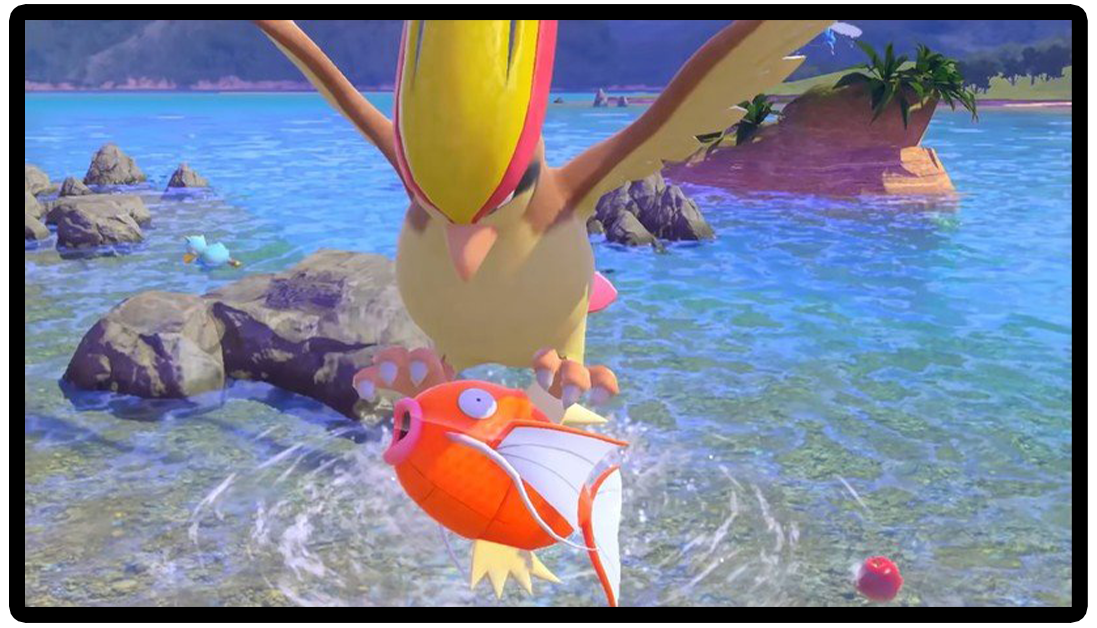
Dr Lava notes: Mach 2 is about 2470 kilometers an hour, which makes Pidgeot the second fastest Pokemon in Kanto, only about 1% slower than Dragonite. The most recent example of Pidgeot preying on Magikarp can be found in New Pokemon Snap, which threw Pokemon fans into a tizzy after it was revealed in the game’s reveal trailer.

“#109 Spearow: Compared with Pidgey, they are much more aggressive. They mainly search for prey among tall grass where they can be seen busily flitting about. While they have little power, they learn the rare Mirror Move.”

“#110 Fearow: Spearow’s evolution. They can soar high all day long on their broad wings. Their powerful beaks let them swallow prey like a Rattata whole.”

“#111 Magnemite: They move around while levitating. The units on their sides radiate energy like electromagnetic waves. Although they are fundamentally different from the other Pokémon of the skies profiled here, they have been included here for the time being because there is nowhere else to group them. Further research is awaited.”

“#112 Magneton: Magnemite’s evolution. What keeps this Pokémon levitating is unknown for now. Formed by multiple Magnemite linked together, they discharge intense magnetic rays and high-voltage power.”
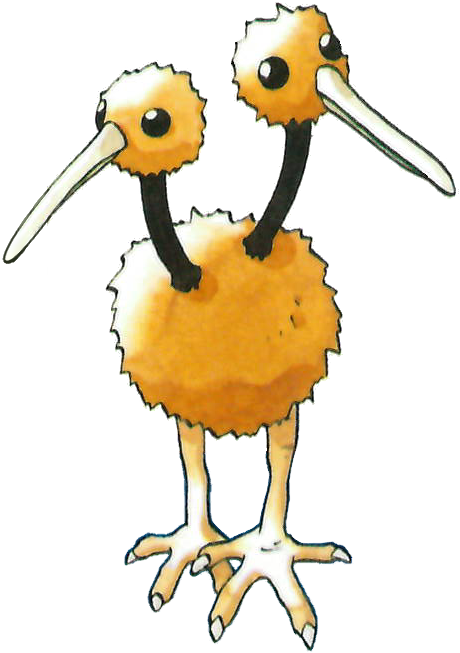
“#113 Doduo: A two-headed Pokémon discovered three years ago. They are probably a mutation. They appear to dislike flying. They seem to be much better at running based on their 100 kmh speed. In the near future, it is feared their wings will devolve and rob them of their ability to fly.”
Dr Lava notes: You can’t see them, but canonically Doduo does have wings — the Pokedex in Pokemon Yellow says “Its short wings make flying difficult.” Apparently the researchers who wrote this entry fear that evolution will eventually remove their wings altogether, similar to how Zubat lost its eyes. The book provides this artwork, explaining that both Doduo’s heads have to work together to be able to function.

“#114 Dodrio: Doduo’s evolution. A rare species that is hardly ever found. Their three heads express the emotions joy, sadness, and anger. Some historians have sworn that in ancient times there was a religion that thrived deep in Central and South America which revered Dodrio as their symbol.”
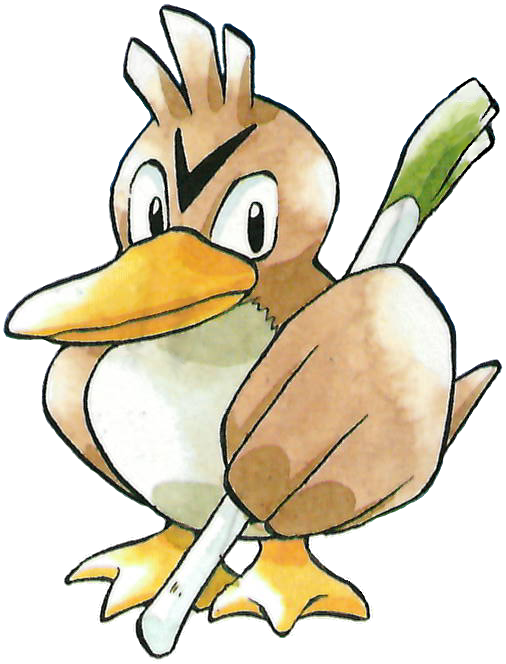
“#115 Farfetch’d: They always carry a plant stalk for crafting their nest when walking. A recent study also revealed the stalk to be food for emergencies. Several years ago, the mass media reported on the deliciousness of cooking Farfetch’d with their stalk. This news spread nationwide, resulting in a massive decline in their population.”
Dr Lava notes: Corocoro’s Ten of Diamonds provides this illustration of Farfetch’d escaping someone’s kitchen. Humans eating Farfetch’d might sound barbasic to some fans, but the concept is actually baked into its design. In Japan there’s an expression, “a duck comes bearing onions” — or in other words, the soup just delivered itself. It’s often used when something surprising but convenient happens, or sometimes as a way of saying “here comes a chump.” The expression is often shortened to “Kamonegi,” which means Duck Onion — and this Pokemon’s Japanese name is also Kamonegi.
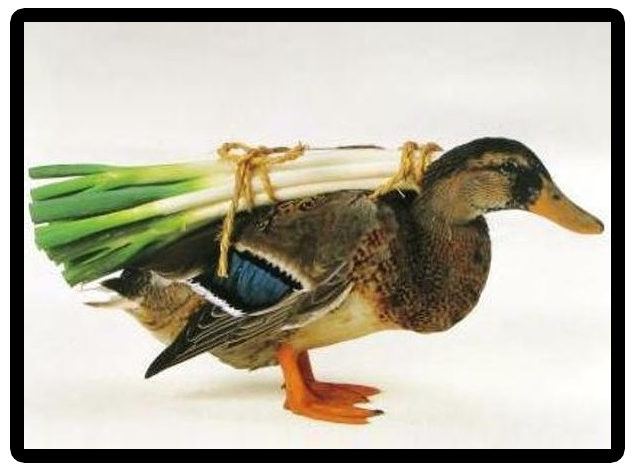
This Pokedex says after the people of Kanto starting eating Farfetch’d en masse, their population massively decline, which might explain why you can’t find any in the wild — there’s only one Farfetch’d in the game, and it’s only obtainable via trade in Vermillion City. Fortunately their population appears to be bouncing back, as the Pokedex in Crystal version says “In order to prevent their extinction, more people have made an effort to breed these Pokémon.”
Urban Pokemon
”It is sad to say, but the Pokémon that live in urban settings are strongly affected by effluents from factories, sewage, and other pollutants. In general, there are many filthy Pokémon but they are guilty of nothing. Instead, we should be thankful to them – they serve as mirrors that reflect how our way of life affects the world around us.”
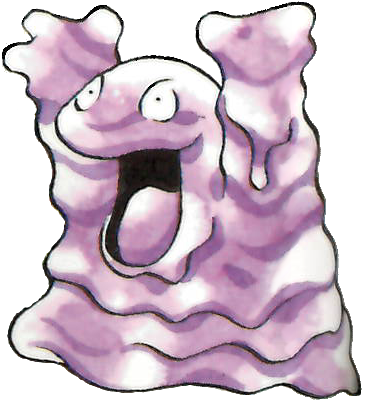
“#116 Grimer: X-rays from the moon transformed toxic sludge into Grimer. They love to eat filthy things. When first discovered, their appearances were limited to empty lots behind factories and so on. However, they have become progressively bolder in the places they appear.”
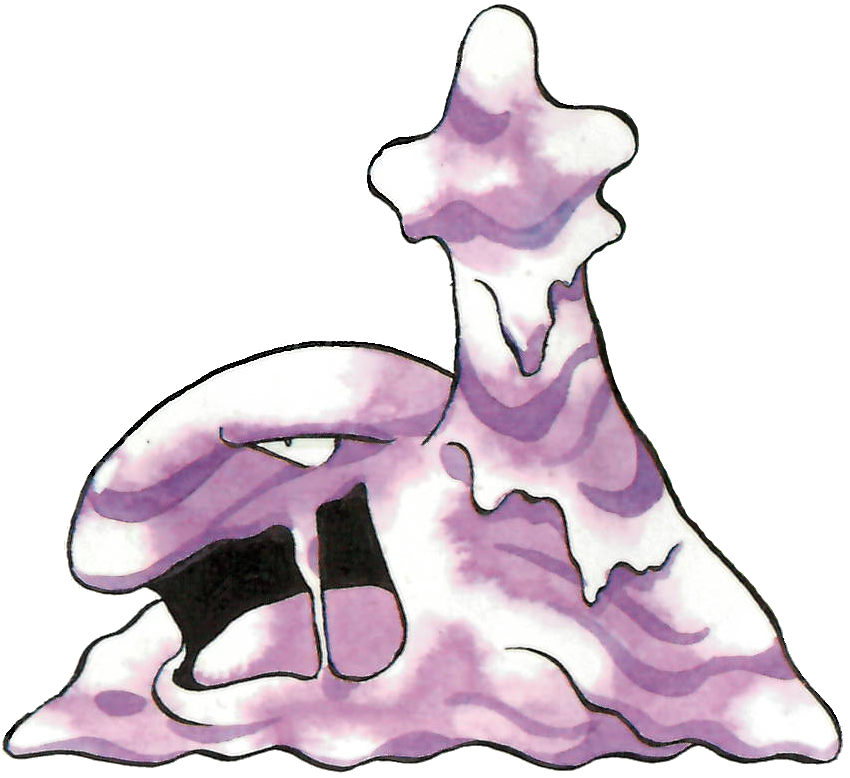
“#117 Muk: They usually keep themselves hidden by mingling with soil. Contact results in a severe poisoning. Analysis of their cells revealed the presence of substances that are inconceivable in living things. They are thought to be Grimer’s evolution.”

“#118 Porygon: In 1995, Silph Co., which undertakes R&D into Pokémon and related products, successfully applied state-of-the-art technology to create this manmade Pokémon. While they are exceedingly rare, they somehow came to be offered as prizes by the Game Corner. Investigations by the authorities are ongoing in the matter. Their findings are eagerly awaited.”
Dr Lava notes: Interestingly, the games never said who exactly created Porygon, only making a vague reference to unnamed scientists — but this Pokedex explicity states Porygon was created by Silph Co, a scene you can see depicted on the Corocoro Jack of Hearts. Since the introduction says Red & Green take place in 1996, Porygon’s creation in 1995 means it’s only existed for a single year. When Pokemon Sun released in 2016, it included a Pokedex entry for Porygon that read: “Roughly 20 years ago, it was artificially created, utilizing the latest technology of the time.”
Combining these two entries suggests that our world and the Pokemon world are on the same timeline, at least for the most part, with Red & Green taking place in 1996, and the events in Sun & Moon taking place in 2016. The player’s manual included with every Generation 1 game says Trainer Red is 11 years old, which would mean he’s 31 in Generation 7. There are some exceptions to our timelines lining up, but an exhaustive breakdown would really require its own dedicated video.

“#119 Koffing: The thin-skinned, balloon-like body is filled with a powerfully toxic gas. Getting too close to this foul-smelling Pokémon makes eyes flood with tears. First discovered in a munitions factory, their habitat has been growing in recent years.”
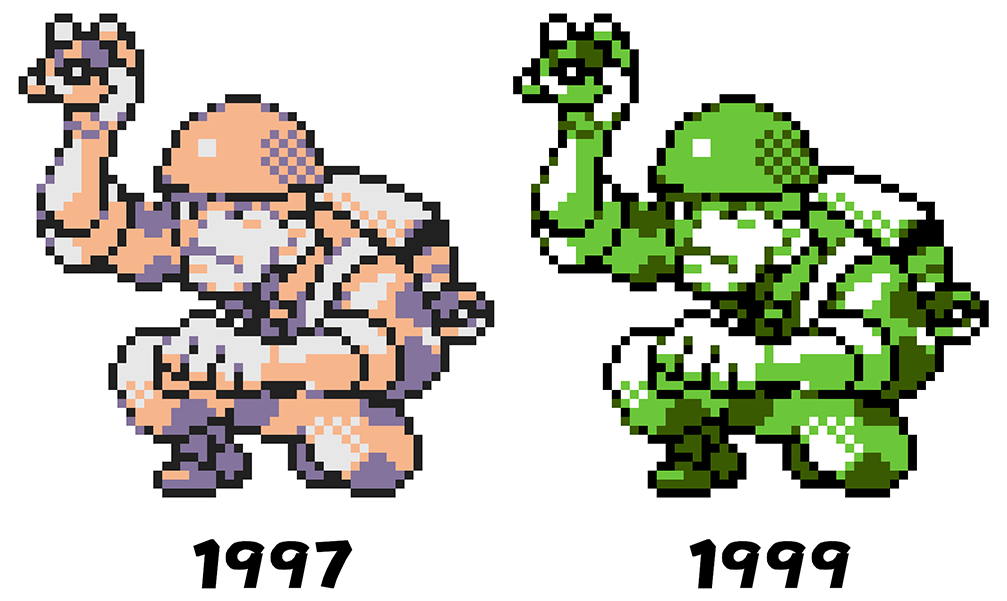
Dr Lava notes: Koffing’s discovery in a munitions factory and Cloyster surviving a napalm bombing tells us just a little bit more about how the Pokemon war was fought. Some beta leaks in recent years also revealed a trainer type called Soldiers who were used in Gold & Silver’s development, but ended up getting cut before the games were finished.

“#120 Weezing: While very rare, mutations can result in Koffing twins that are joined together. The lab is developing a medicine for bleaching the toxicity out of Weezing.”

“#121 Voltorb: A completely enigmatic creature. They generate an unpleasant buzzing noise. While many live in power plants, etc., they appear to have spread to towns in recent years by traveling on power lines. They possess Electric-type moves. They are reckless and prone to exploding without warning.”
Dr Lava notes: Voltorb spreading from power plants to towns through power lines can be seen on Corocoro’s Queen of Spades. Although they mostly live in Power Plants, in-game Pokedex entries make it clear Voltorb was first discovered at a company that manufactures Poke Balls, and vaguely hints there must be some connection.
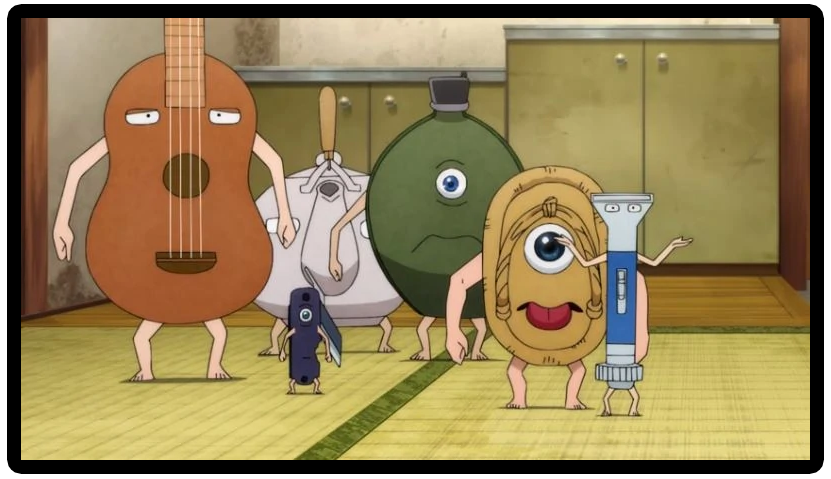
This is likely because Voltorb is partly based on Tsukumogami, tools from Japanese folklore that come to life and become self-aware on their 100th birthday. The Journal section of this book says Pokeballs were invented by Professor Nishinomori around 1925, so it seems Voltorb’s not actually a 100 year old Pokeball. But the Tsukumogami inspiration appears to be hinted by the fact the in-game Pokedex lists Voltorb as Pokemon #100.

“#122 Electrode: Voltorb’s evolution. Because they explode at the slightest provocation, they are feared with the nickname ‘Bomb Ball.'”
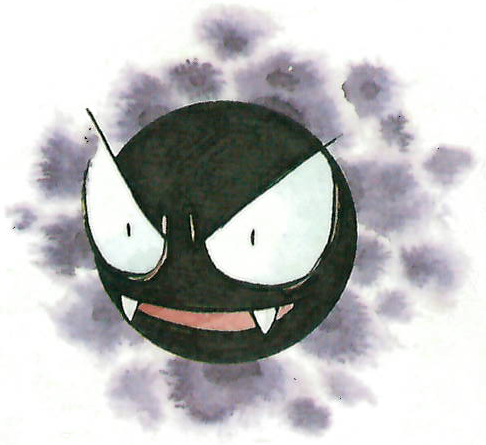
“#123 Gastly: A life form composed of a diffuse, gaseous matter. Even an Indian elephant would fall in two seconds if enveloped in their gas. Many mysteries surround this Pokémon. Some theories claim they are photochemical smog come to life while others claim they are extra-dimensional beings. The answer remains unknown. For the time being, our study group adopted the former theory and included them among the Pokémon of towns.”
Dr Lava notes: Raichu and Gastly’s entries in this Pokedex, as well as in the games, both say they can knock out an Indian elephant. There’s plenty of entries that talk about Pokemon eating real-life animals, but except for an Indian elephant, no mention of knocking them out. These references might be leftovers from an Elephant Pokemon scrapped in development, whose beta sprite was revealed in Satoshi Tajiri’s biographical manga. It’s possible Raichu and Gastly’s entries originally said they could knock out this Lost Elephant Pokemon, then after it got cut, the text was swapped out for Indian elephant. Or maybe I’m just overthinking it.
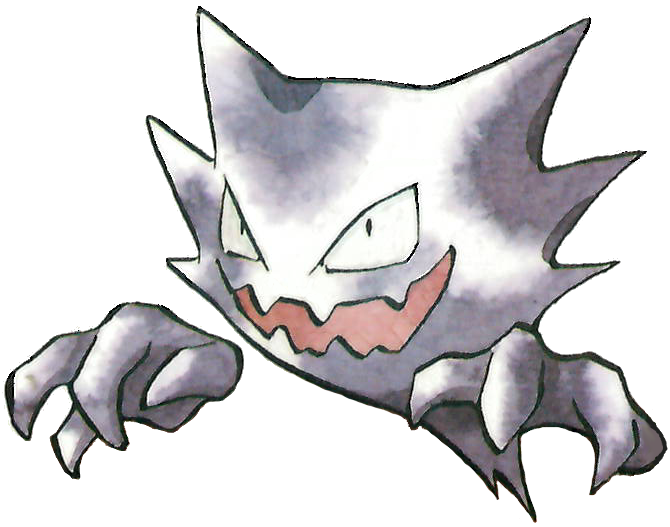
“#124 Haunter: Gastly’s evolution. They learn moves like Dream Eater and Psychic. It is said that if you feel as though you are being watched in a dark place with no one else around, there is a Haunter lurking.”
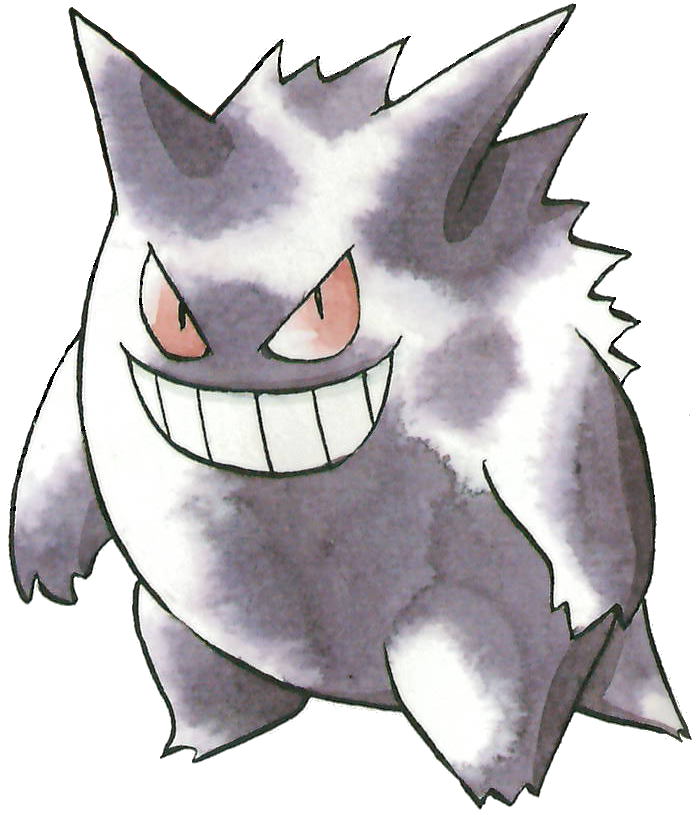
“#125 Gengar: Thought to be Haunter’s evolution from the moves they learn and their physical attributes, but the hypothesis is yet to be proven. They are said to emerge from darkness to kill people who become lost on mountains. There are shrines honoring Gengar on several mountains.”
Dr Lava notes: Here the book provides artwork of Gengar emerging from the darkness, just seconds before robbing a man of his life. Apparently this is what Sugimori meant when he said Ghost Pokemon feed on the spirit.
Enigmatic Pokemon
“Precognition, telekinesis, X-ray vision, and on and on, there are paranormal phenomena that sadly defy explanation using the scientific knowledge we have now. And, in the world of Pokémon that we study and analyze, there are paranormal Pokémon that possess otherworldly powers. They remain yet-unsolved enigmas. Here we share what we have learned so far.”

“#126 Abra: They sleep for 16 hours a day. However, even asleep they use a variety of extrasensory powers. They are rarely encountered due to their small population. Moreover, they will Teleport instantly if threatened. As a result, they often escape before they could be captured in a rare encounter. They evolve into Kadabra.”
Skip to: Part 1 | 2 | 3 | 4 | 5 | 6 | 7 | Journal | Maps | Itoh Art | Interview | More

